Superficial Grain Refinement of 316L Stainless Steel by Rolling with Rough Rolls
Abstract
:1. Introduction
2. Materials and Methods
2.1. Materials
2.2. Rolling and Annealing Treatment
2.3. Morphological and Structural Characterization
2.4. FEM Model
2.5. Wear Resistance and Nanoindentation Characterization
3. Results
3.1. Microstructural Analysis
3.2. FEM Model Analysis
3.2.1. Plastic Strain
3.2.2. Stress
3.2.3. Rolling Forces
3.3. Wear Resistance and Nanohardness Analysis
4. Conclusions
Author Contributions
Funding
Institutional Review Board Statement
Informed Consent Statement
Data Availability Statement
Acknowledgments
Conflicts of Interest
References
- Valentini, L.; Di Schino, A.; Kenny, J.M.; Gerbig, Y.; Haefke, H. Influence of grain size and film composition on wear resistance of ultra fine grained AISI 304 stainless steel coated with amorphous carbon films. Wear 2002, 253, 458–464. [Google Scholar] [CrossRef]
- Xu, W.; Yu, J.; Jia, L.; Gao, C.; Miao, Z.; Wu, G.; Li, G.; Zhang, Z. Grain refinement impact on the mechanical properties and wear behavior of Mg-9Gd-3Y-2Zn-0.5Zr alloy after decreasing temperature reciprocating upsetting-extrusion. J. Magnes. Alloys 2022, 10, 3506–3519. [Google Scholar] [CrossRef]
- Ralston, K.D.; Birbilis, N. Effect of Grain Size on Corrosion: A Review. Corrosion 2010, 66, 075005. [Google Scholar] [CrossRef]
- Karakulak, E. A review: Past, present and future of grain refining of magnesium castings. J. Magnes. Alloys 2019, 7, 355–369. [Google Scholar] [CrossRef]
- Pekguleryuz, M.; Celikin, M. Creep resistance in magnesium alloys. Int. Mater. Rev. 2010, 55, 197–217. [Google Scholar] [CrossRef]
- Li, S.; Deng, T.; Zhang, Y.; Liang, Y.; Li, R.; Dong, T. Review on the Creep Resistance of High-Temperature Titanium Alloy. Trans. Indian Inst. Met. 2021, 74, 215–222. [Google Scholar] [CrossRef]
- Di Schino, A.; Kenny, J.M. Effect of grain size on the corrosion resistance of a high nitrogen-low nickel austenitic stainless steel. J. Mater. Sci. Lett. 2002, 21, 1969–1971. [Google Scholar] [CrossRef]
- Bregliozzi, G.; Di Schino, A.; Haefke, H.; Kenny, J.M. Cavitation erosion resistance of a high nitrogen austenitic stainless steel as a function of its grain size. J. Mater. Sci. Lett. 2003, 22, 981–983. [Google Scholar] [CrossRef]
- Bregliozzi, G.; Di Schino, A.; Ahmed, S.I.U.; Kenny, J.M.; Haefke, H. Cavitation wear behaviour of austenitic stainless steels with different grain sizes. Wear 2005, 258, 503–510. [Google Scholar] [CrossRef]
- Azadmanjiri, J.; Berndt, C.C.; Kapoor, A.; Wen, C. Development of Surface Nano-Crystallization in Alloys by Surface Mechanical Attrition Treatment (SMAT). Crit. Rev. Solid State Mater. Sci. 2015, 40, 164–181. [Google Scholar] [CrossRef]
- Bagherifard, S.; Guagliano, M. Review of shot peening processes to obtain nanocrystalline surfaces in metal alloys. Surf. Eng. 2009, 25, 3–14. [Google Scholar] [CrossRef]
- Efe, Y.; Karademir, I.; Husem, F.; Maleki, E.; Karimbaev, R.; Amanov, A.; Unal, O. Enhancement in microstructural and mechanical performance of AA7075 aluminum alloy via severe shot peening and ultrasonic nanocrystal surface modification. Appl. Surf. Sci. 2020, 528, 146922. [Google Scholar] [CrossRef]
- Roland, T.; Retraint, D.; Lu, K.; Lu, J. Fatigue life improvement through surface nanostructuring of stainless steel by means of surface mechanical attrition treatment. Scr. Mater. 2006, 54, 1949–1954. [Google Scholar] [CrossRef]
- Mordyuk, B.N.; Prokopenk, G.I.; Vasylyev, M.A.; Iefimov, M.O. Effect of structure evolution induced by ultrasonic peening on the corrosion behavior of AISI-321 stainless steel. Mater. Sci. Eng. A 2007, 458, 253–261. [Google Scholar] [CrossRef]
- Bagherifard, S.; Guagliano, M. Fatigue behavior of a low-alloy steel with nanostructured surface obtained by severe shot peening. Eng. Fract. Mech. 2012, 81, 56–68. [Google Scholar] [CrossRef]
- Bagherifard, S.; Slawik, S.; Fernandez-Pariente, I.; Pauly, C.; Muecklich, F.; Guagliano, M. Nanoscale surface modification of AISI 316L stainless steel by severe shot peening. Mater. Des. 2016, 102, 68–77. [Google Scholar] [CrossRef]
- Maleki, E.; Unal, O.; Reza Kashyzadeh, K. Surface layer nanocrystallization of carbon steels subjected to severe shot peening: Analysis and optimization. Mater. Charact. 2019, 157, 109877. [Google Scholar] [CrossRef]
- Tao, N.R.; Sui, M.L.; Lu, J.; Lu, K. Surface nanocrystallization of iron induced by ultrasonic shot peening. Nanostruct. Mater. 1999, 11, 433–440. [Google Scholar] [CrossRef]
- Liu, G.; Lu, J.; Lu, K. Surface nanocrystallization of 316L stainless steel induced by ultrasonic shot peening. Mater. Sci. Eng. A 2000, 286, 91–95. [Google Scholar] [CrossRef]
- Liu, G.; Wang, S.C.; Lou, X.F.; Lu, J.; Lu, K. Low carbon steel with nanostructured surface layer induced by high-energy shot peening. Scr. Mater. 2001, 44, 1791–1795. [Google Scholar] [CrossRef]
- Lu, Z.; Shi, L.; Zhu, S.; Tang, Z.; Jiang, Y. Effect of high energy shot peening pressure on the stress corrosion cracking of the weld joint of 304 austenitic stainless steel. Mater. Sci. Eng. A 2015, 637, 170–174. [Google Scholar] [CrossRef]
- Lu, K.; Lu, J. Nanostructured surface layer on metallic materials induced by surface mechanical attrition treatment. Mater. Sci. Eng. A 2004, 375, 38–45. [Google Scholar] [CrossRef]
- Tao, N.R.; Wang, Z.B.; Tong, W.P.; Sui, M.L.; Lu, J.; Lu, K. An investigation of surface nanocrystallization mechanism in Fe induced by surface mechanical attrition treatment. Acta Mater. 2002, 50, 4603–4616. [Google Scholar] [CrossRef]
- Mordyuk, B.N.; Karasevskaya, O.P.; Prokopenko, G.I.; Khripta, N.I. Ultrafine-grained textured surface layer on Zr-1%Nb alloy produced by ultrasonic impact peening for enhanced corrosion resistance. Surf. Coat. Technol. 2012, 210, 54–61. [Google Scholar] [CrossRef]
- Mordyuk, B.N.; Prokopenko, G.I. Ultrasonic impact peening for the surface properties’ management. J. Sound Vib. 2007, 308, 855–866. [Google Scholar] [CrossRef]
- Guan, X.S.; Dong, Z.F.; Li, D.Y. Surface nanocrystallization by sandblasting and annealing for improved mechanical and tribological properties. Nanotechnology 2005, 16, 2963–2971. [Google Scholar] [CrossRef]
- Wang, L.C.; Li, D.Y. Mechanical, electrochemical and tribological properties of nanocrystalline surface of brass produced by sandblasting and annealing. Surf. Coat. Technol. 2003, 167, 188–196. [Google Scholar] [CrossRef]
- Kwok, C.T.; Cheng, F.T.; Man, H.C.; Ding, W.H. Corrosion characteristics of nanostructured layer on 316L stainless steel fabricated by cavitation-annealing. Mater. Lett. 2006, 60, 2419–2422. [Google Scholar] [CrossRef]
- Wang, X.Y.; Li, D.Y. Mechanical and electrochemical behavior of nanocrystalline surface of 304 stainless steel. Electrochim. Acta 2002, 47, 3939–3947. [Google Scholar] [CrossRef]
- Camurri, C.; Gallegos, A.; Carrasco, C. Rolling of 316L Stainless Steel with Rough Rolls to Potentially Obtain Superficial Nanograins. J. Mater. Eng. Perform. 2014, 23, 1959–1963. [Google Scholar] [CrossRef]
- ASTM A240/A240M-22a; Standard Specification for Chromium and Chromium-Nickel Stainless Steel Plate, Sheet, and Strip for Pressure Vessels and for General Applications. ASTM International: West Conshohocken, PA, USA, 2022. [CrossRef]
- AMSE SA-240/SA-240M; Specification for Chromium and Chromium-Nickel Stainless Steel Plate, Sheet, and Strip for Pressure Vessels and for General Applications. ASME: New York, NY, USA, 1998.
- Handbook, M. Atlas of Microstructures of Industrial Alloys; ASM: Detroit, MI, USA, 1972. [Google Scholar]
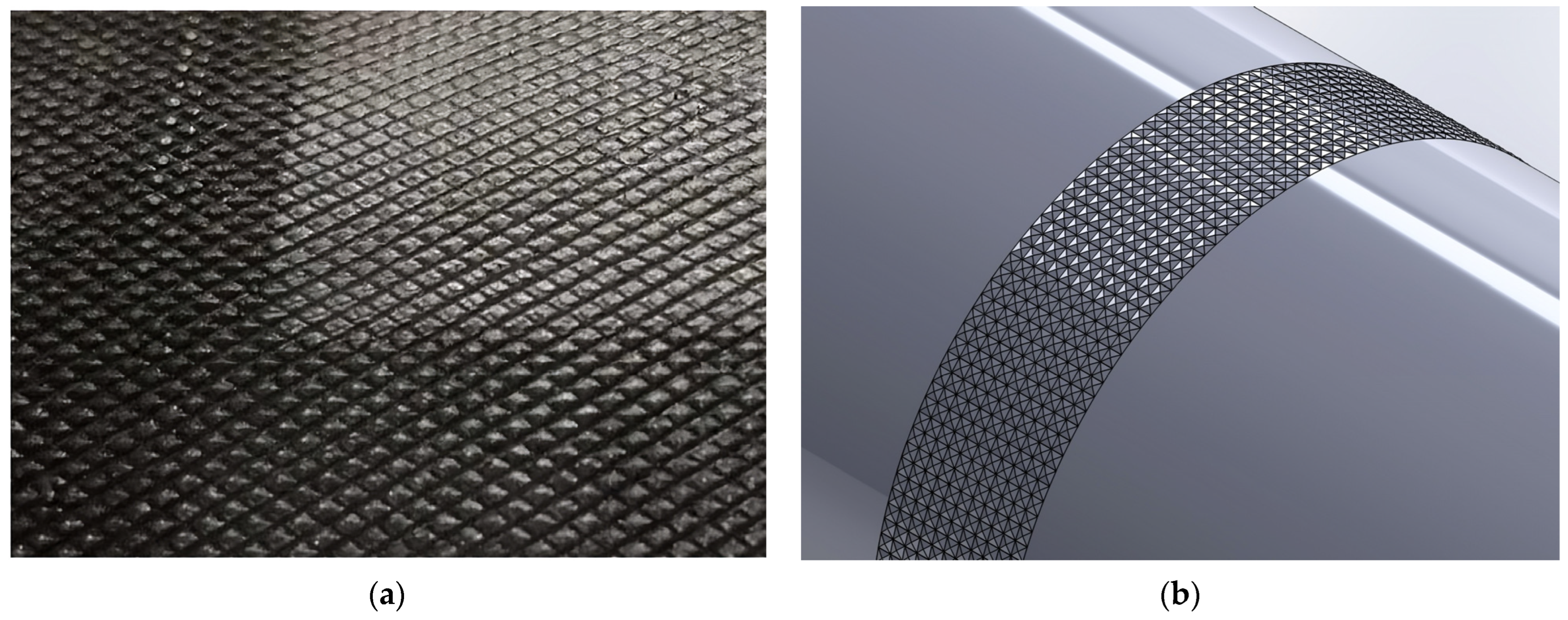
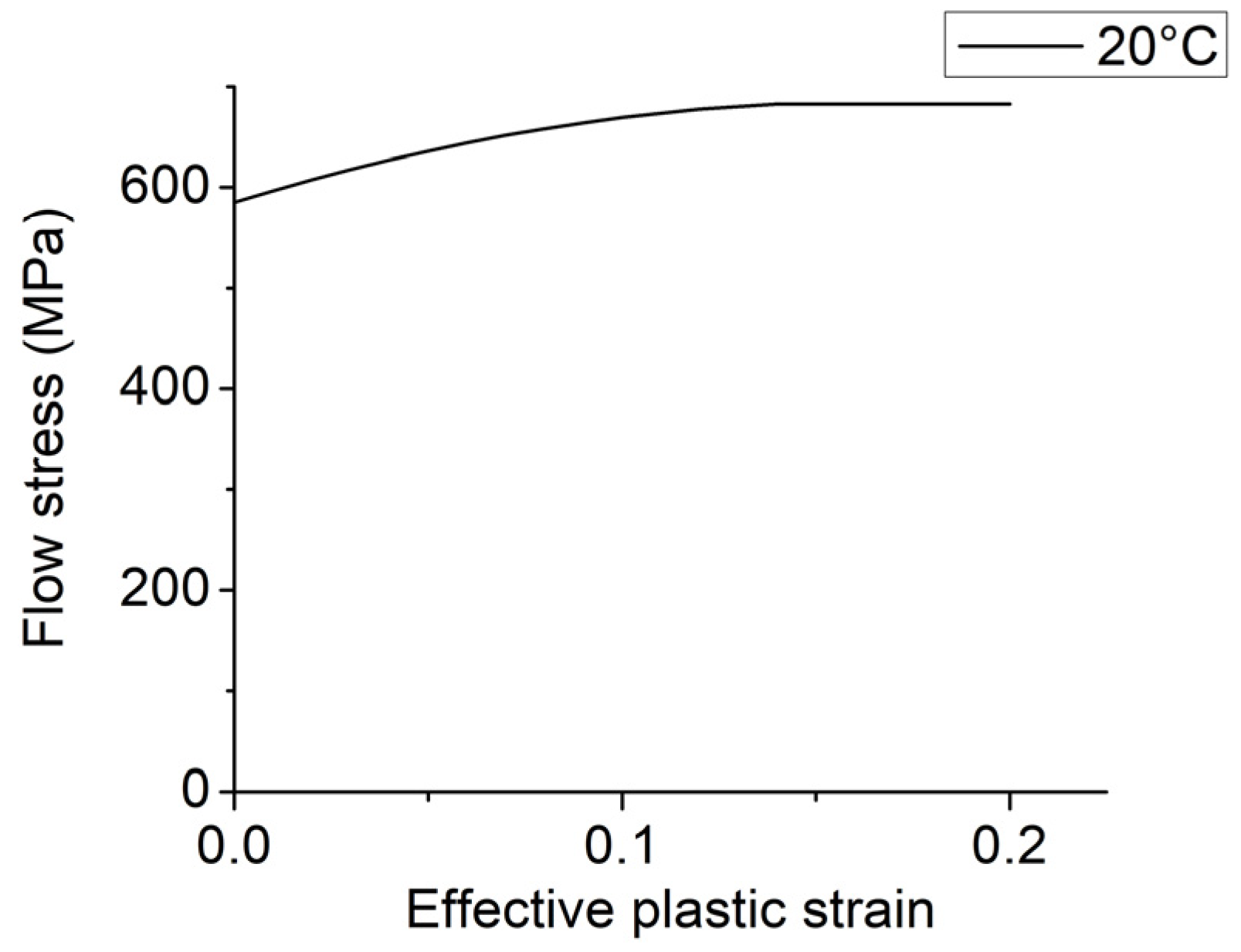

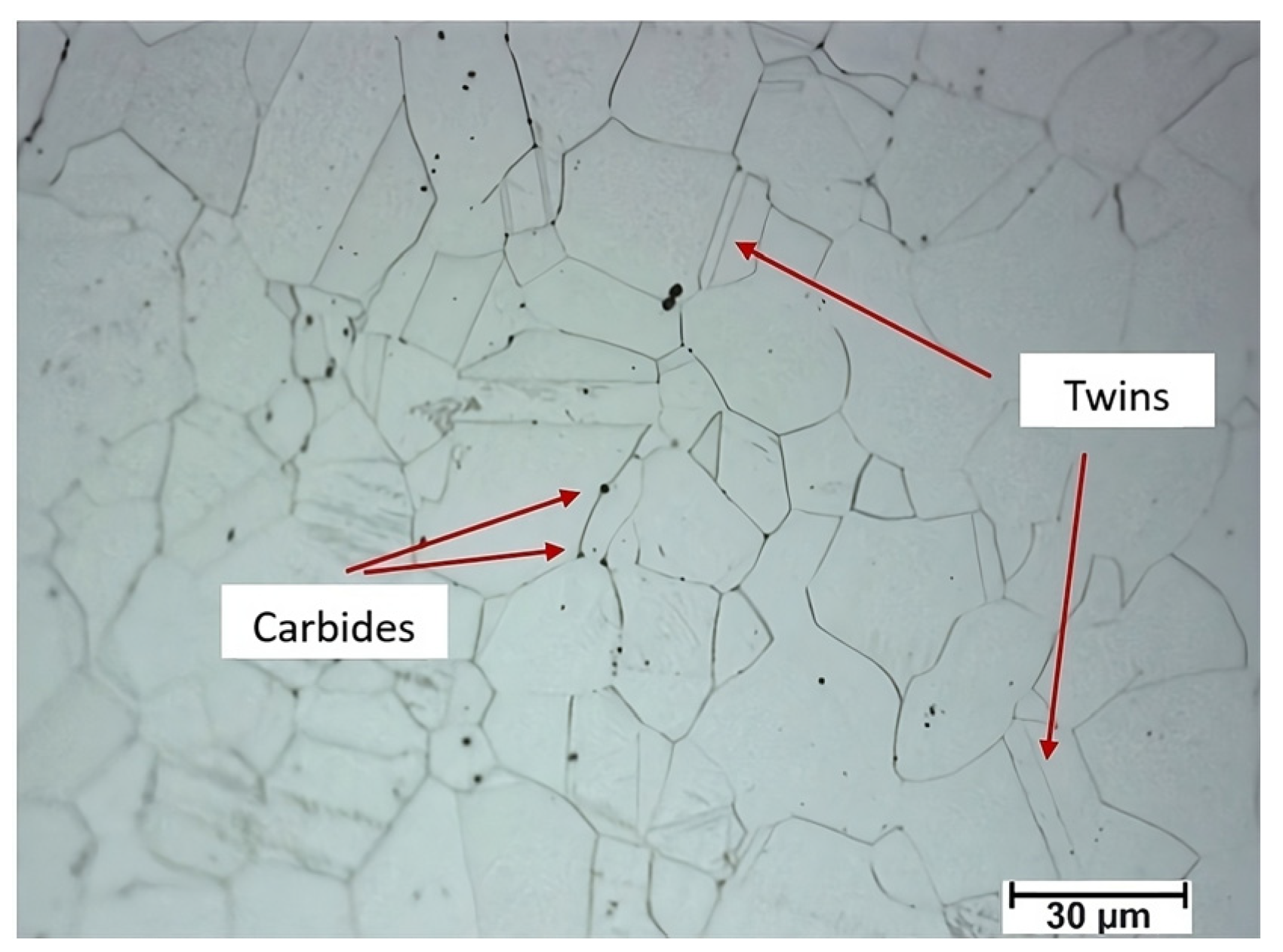
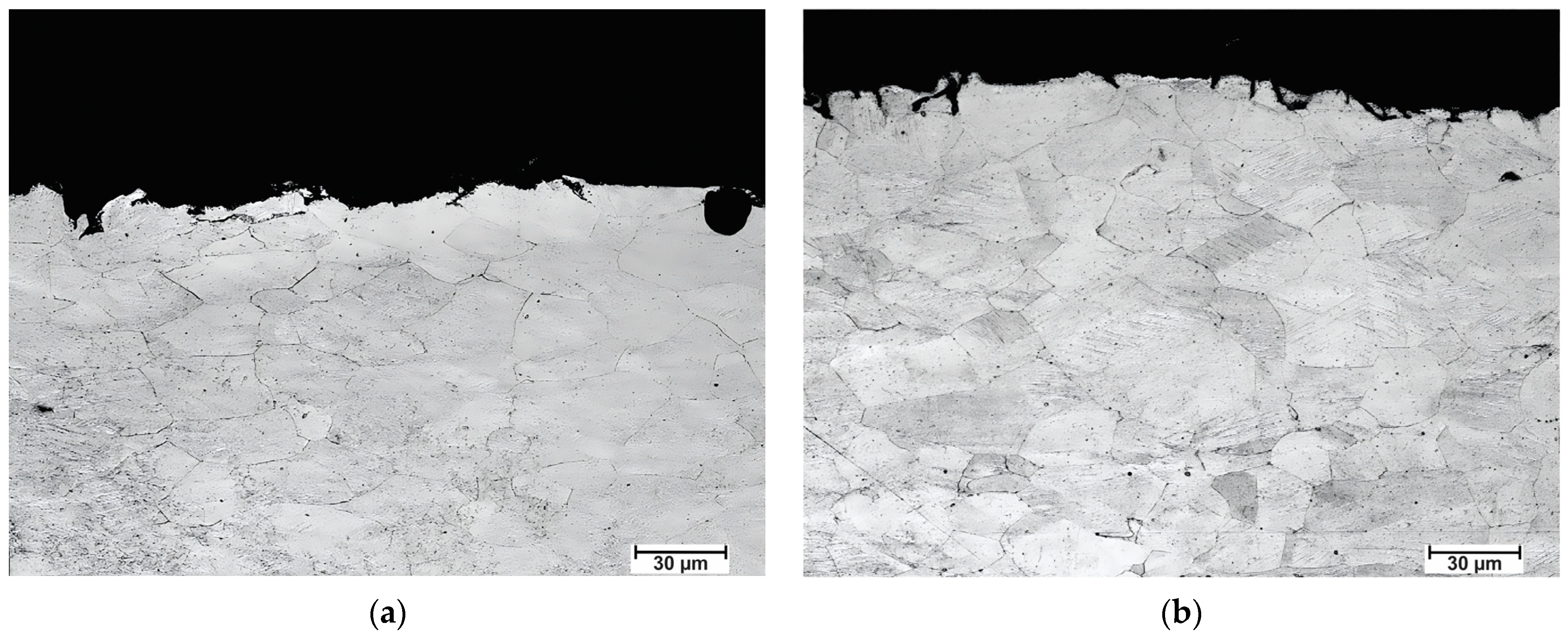
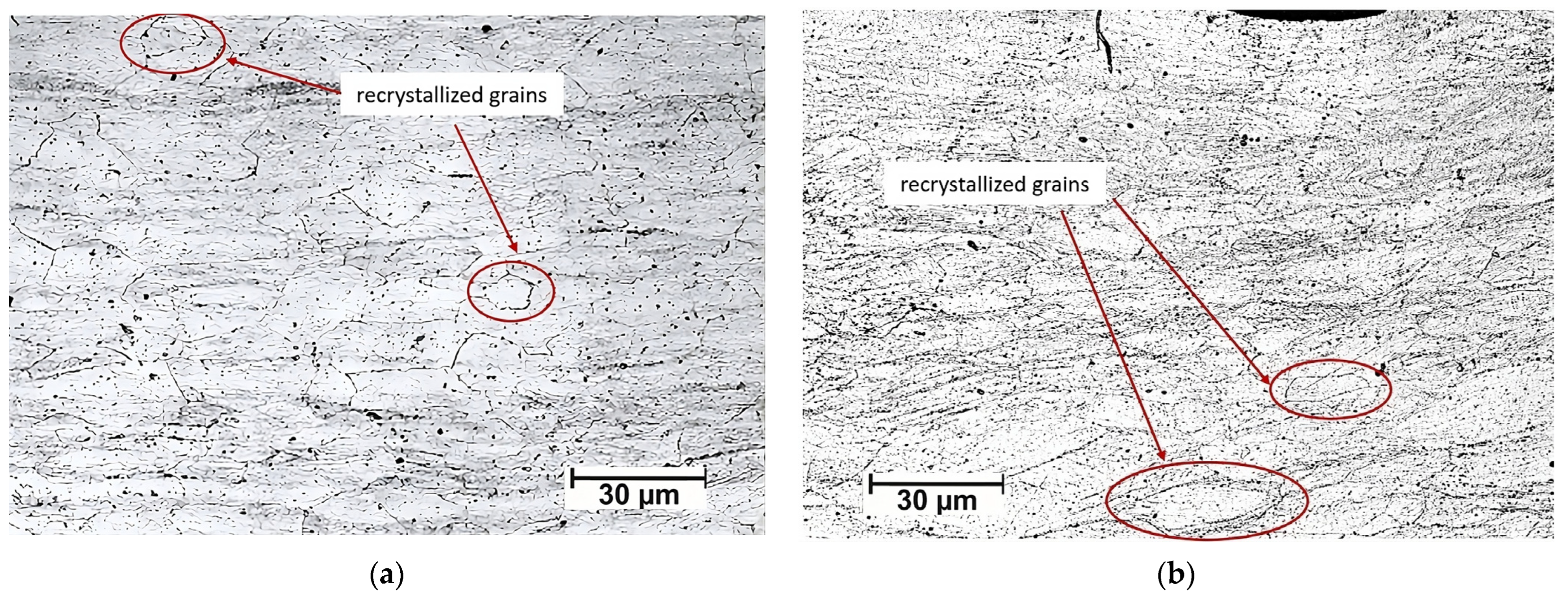

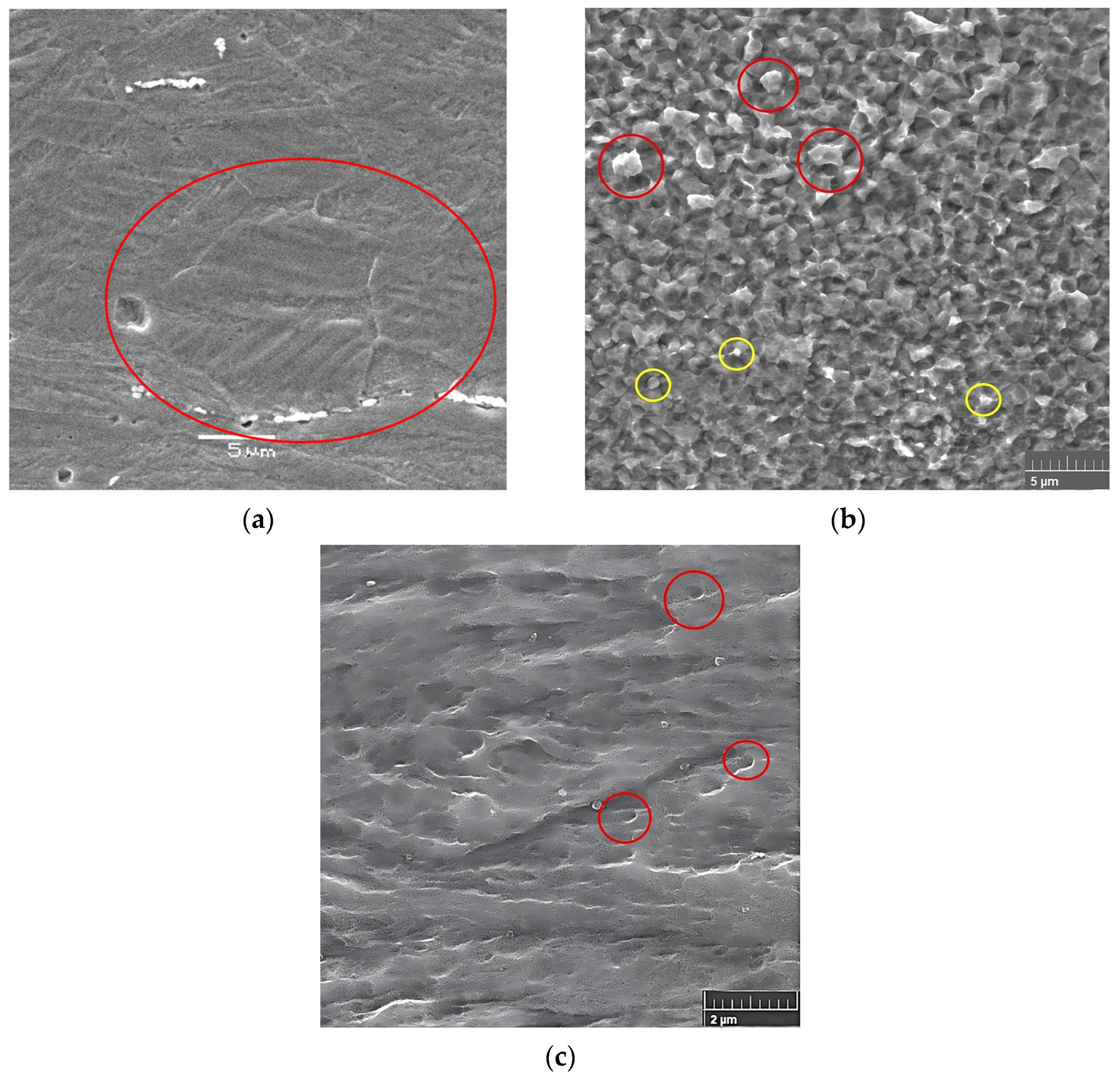




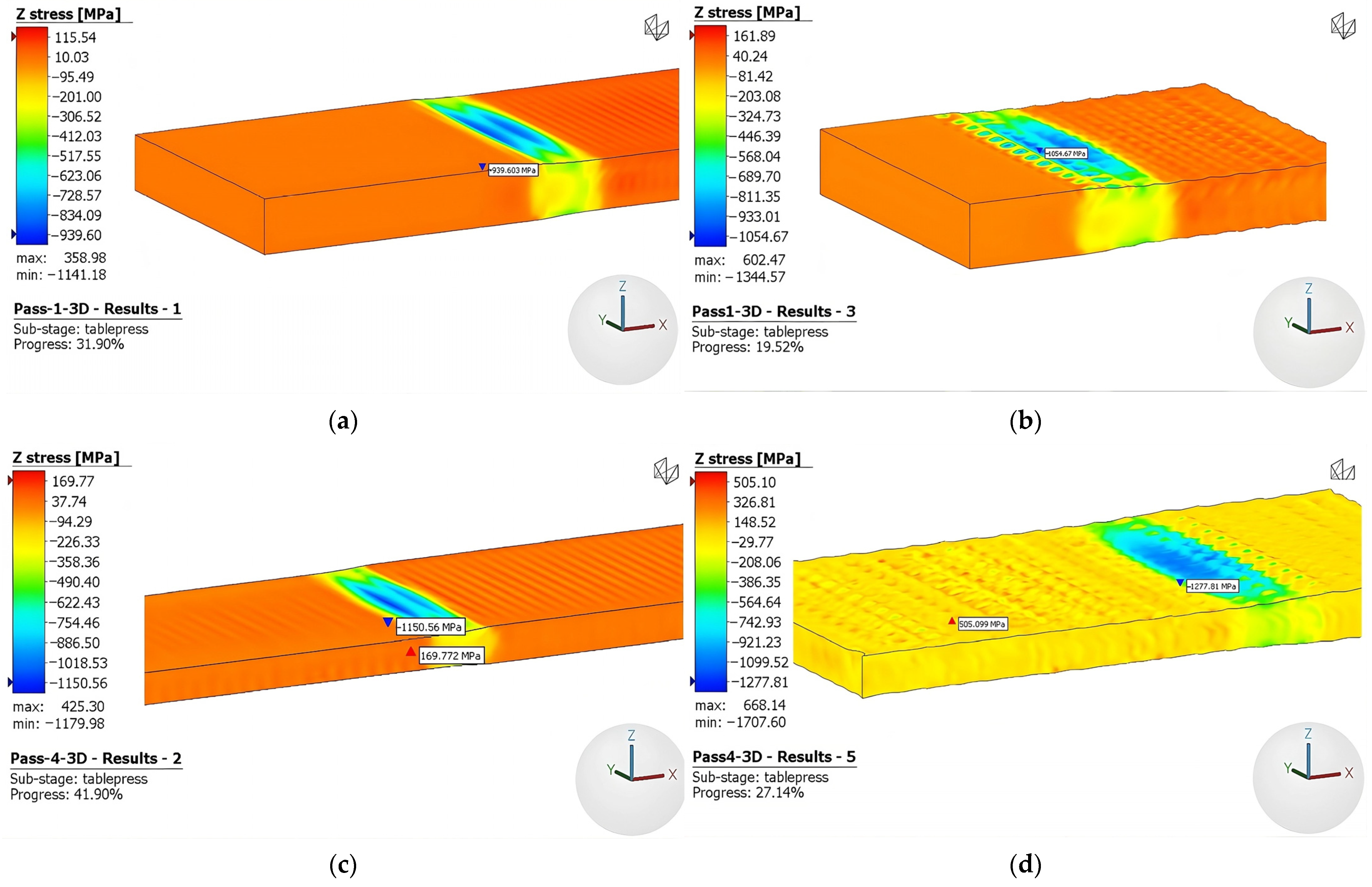

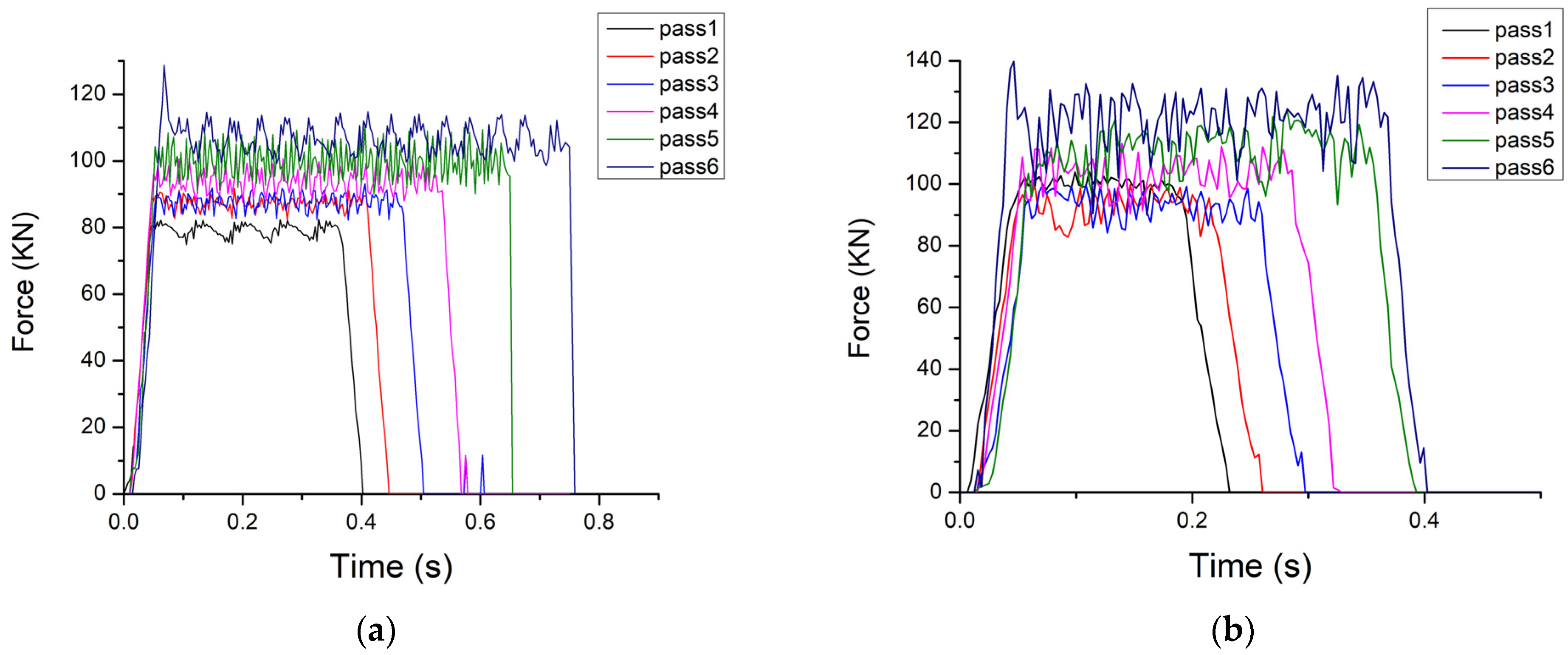
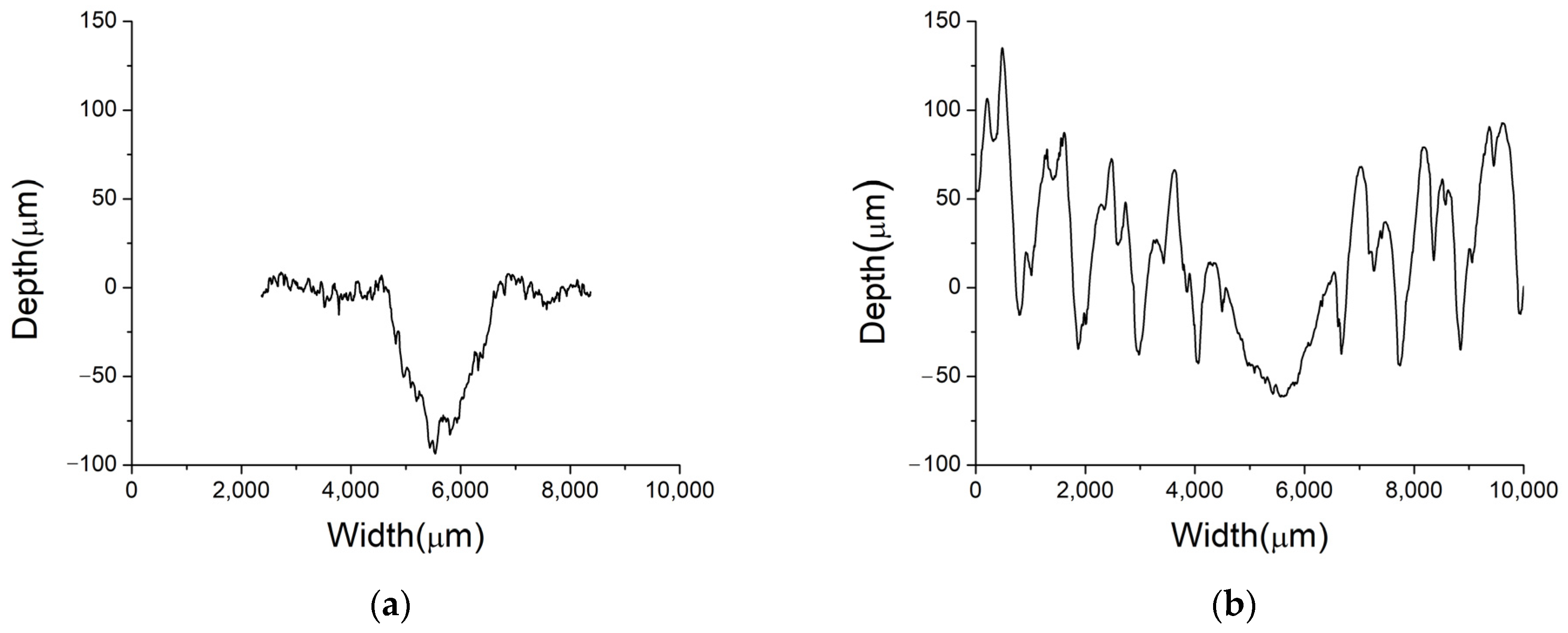

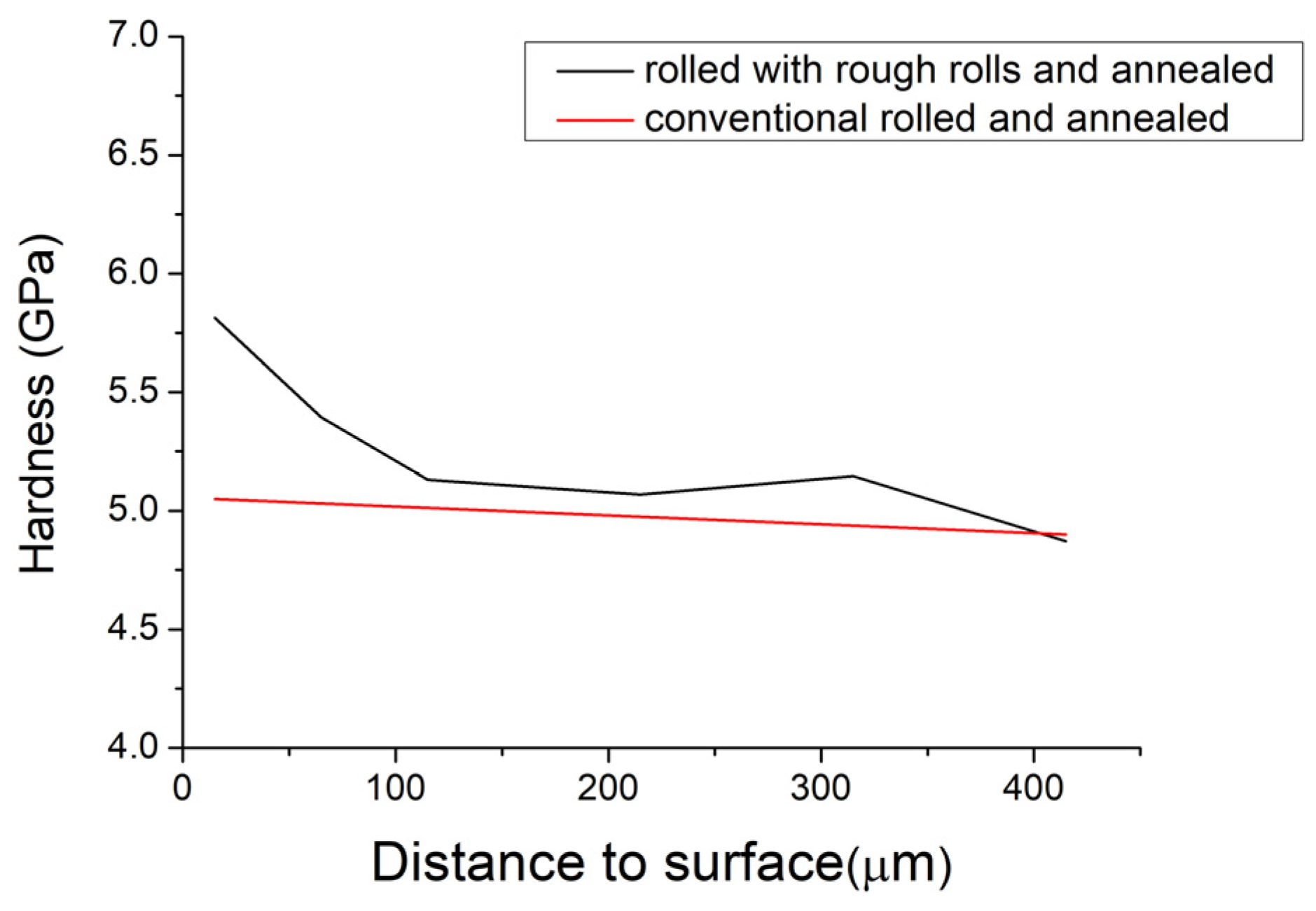

| Element | C max | Cr | Ni | Mn Max | Si Max | P Max | S Max | Mo | Fe |
|---|---|---|---|---|---|---|---|---|---|
| Weight percent | 0.03 | 16.00–18.00 | 10.00–14.00 | 2.00 | 1.00 | 0.045 | 0.03 | 2.00–3.00 | Balance |
| Pass 1 | Conventional | Roughness | ||
|---|---|---|---|---|
| Bulk | Surface | Bulk | Surface | |
| 1 | 0.13 | 0.13–0.16 | 0.16 | 0.15–0.43 |
| 2 | 0.26 | 0.29–0.35 | 0.30 | 0.30–0.87 |
| 3 | 0.42 | 0.46–0.53 | 0.45 | 0.50–1.14 |
| 4 | 0.61 | 0.66–0.79 | 0.66 | 0.75–1.49 |
| 5 | 0.81 | 0.91–1.09 | 0.91 | 1.05–1.74 |
| 6 | 1.08 | 1.17–1.42 | 1.22 | 1.40–1.99 |
Disclaimer/Publisher’s Note: The statements, opinions and data contained in all publications are solely those of the individual author(s) and contributor(s) and not of MDPI and/or the editor(s). MDPI and/or the editor(s) disclaim responsibility for any injury to people or property resulting from any ideas, methods, instructions or products referred to in the content. |
© 2023 by the authors. Licensee MDPI, Basel, Switzerland. This article is an open access article distributed under the terms and conditions of the Creative Commons Attribution (CC BY) license (https://creativecommons.org/licenses/by/4.0/).
Share and Cite
Maril, Y.; Camurri, C.; Zapata-Hernández, O.; Carrasco, C.; Maril, M. Superficial Grain Refinement of 316L Stainless Steel by Rolling with Rough Rolls. Materials 2023, 16, 6416. https://doi.org/10.3390/ma16196416
Maril Y, Camurri C, Zapata-Hernández O, Carrasco C, Maril M. Superficial Grain Refinement of 316L Stainless Steel by Rolling with Rough Rolls. Materials. 2023; 16(19):6416. https://doi.org/10.3390/ma16196416
Chicago/Turabian StyleMaril, Yasmin, Carlos Camurri, Oscar Zapata-Hernández, Claudia Carrasco, and Marisol Maril. 2023. "Superficial Grain Refinement of 316L Stainless Steel by Rolling with Rough Rolls" Materials 16, no. 19: 6416. https://doi.org/10.3390/ma16196416
APA StyleMaril, Y., Camurri, C., Zapata-Hernández, O., Carrasco, C., & Maril, M. (2023). Superficial Grain Refinement of 316L Stainless Steel by Rolling with Rough Rolls. Materials, 16(19), 6416. https://doi.org/10.3390/ma16196416




